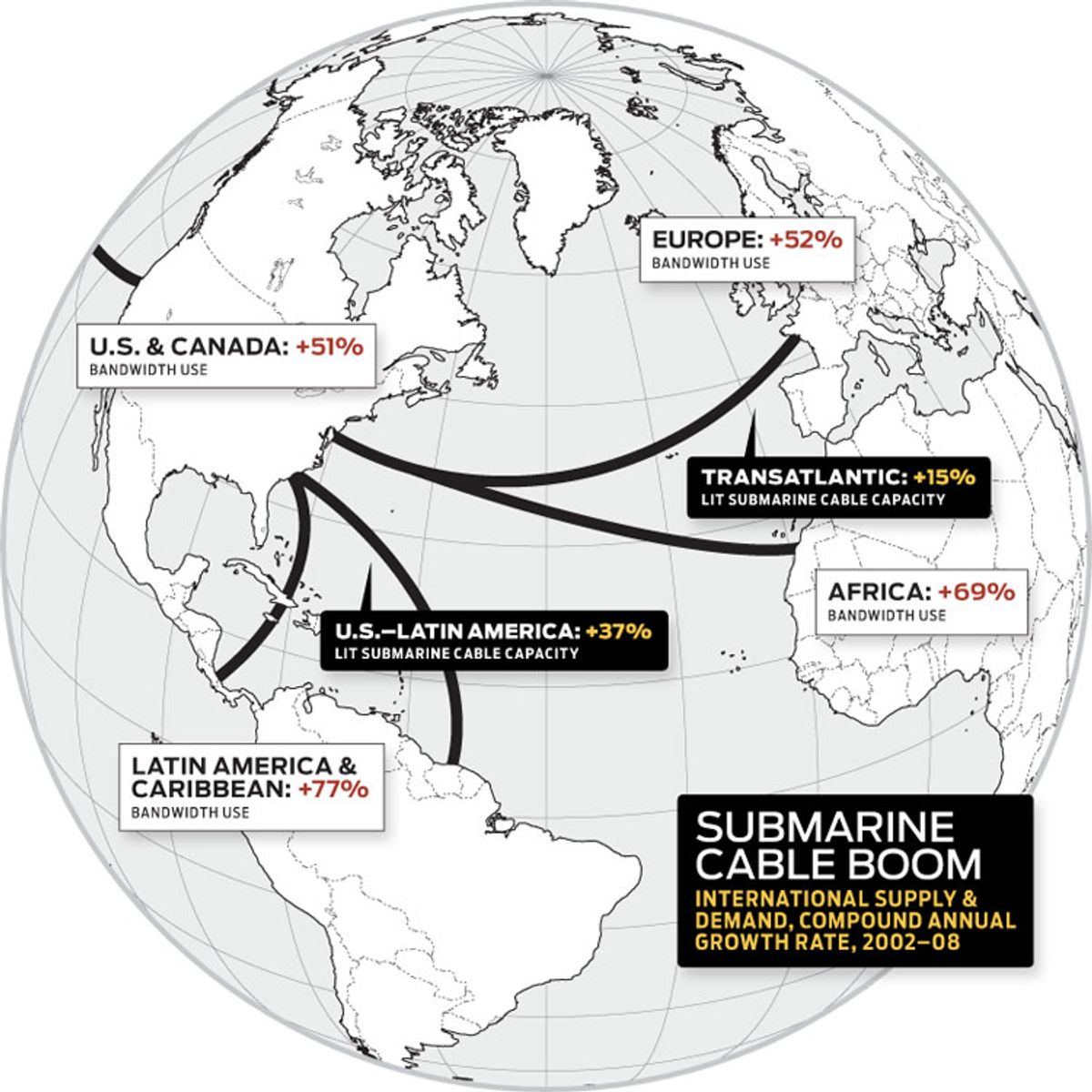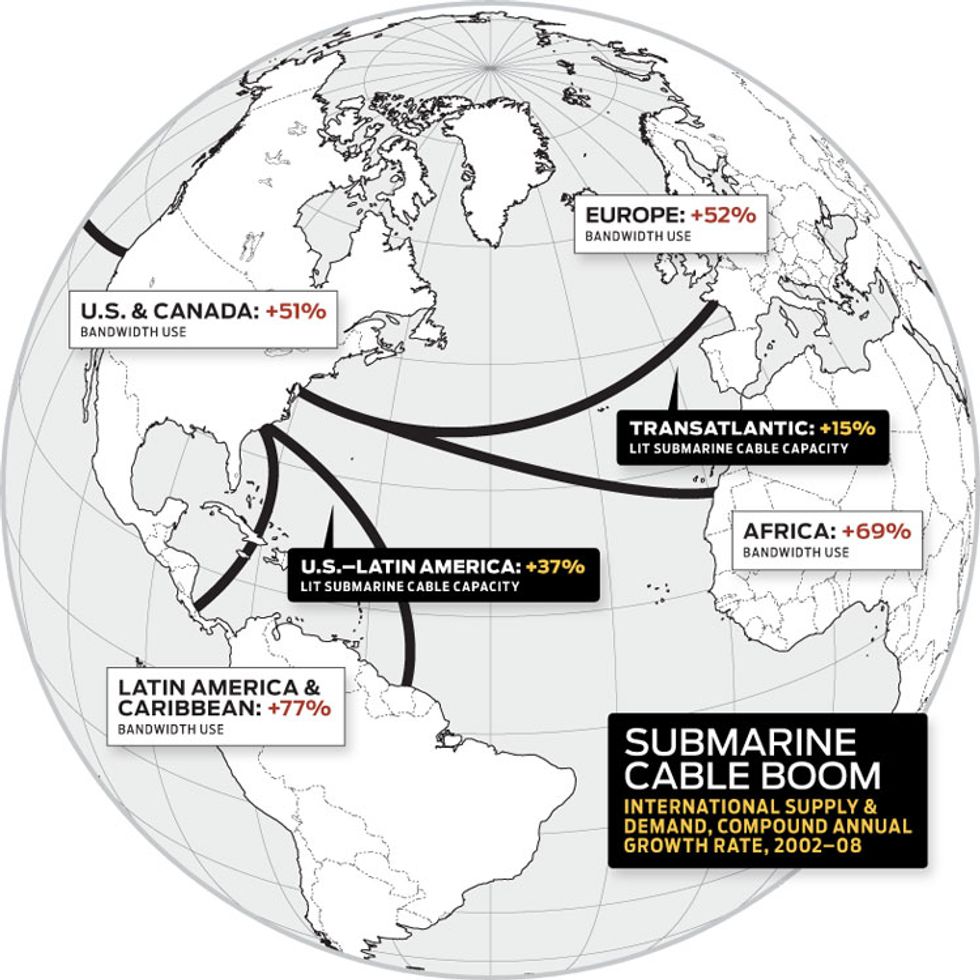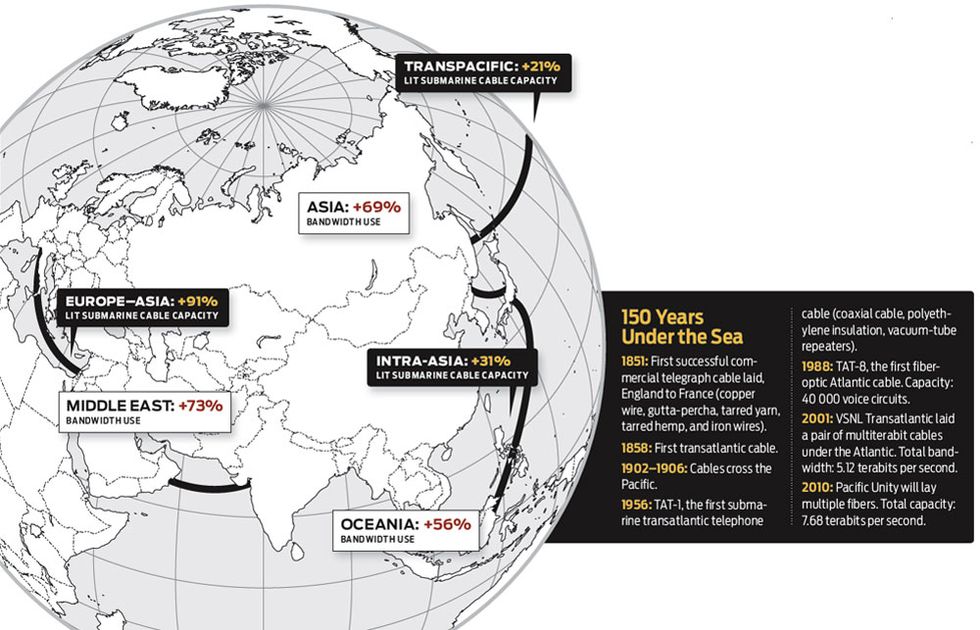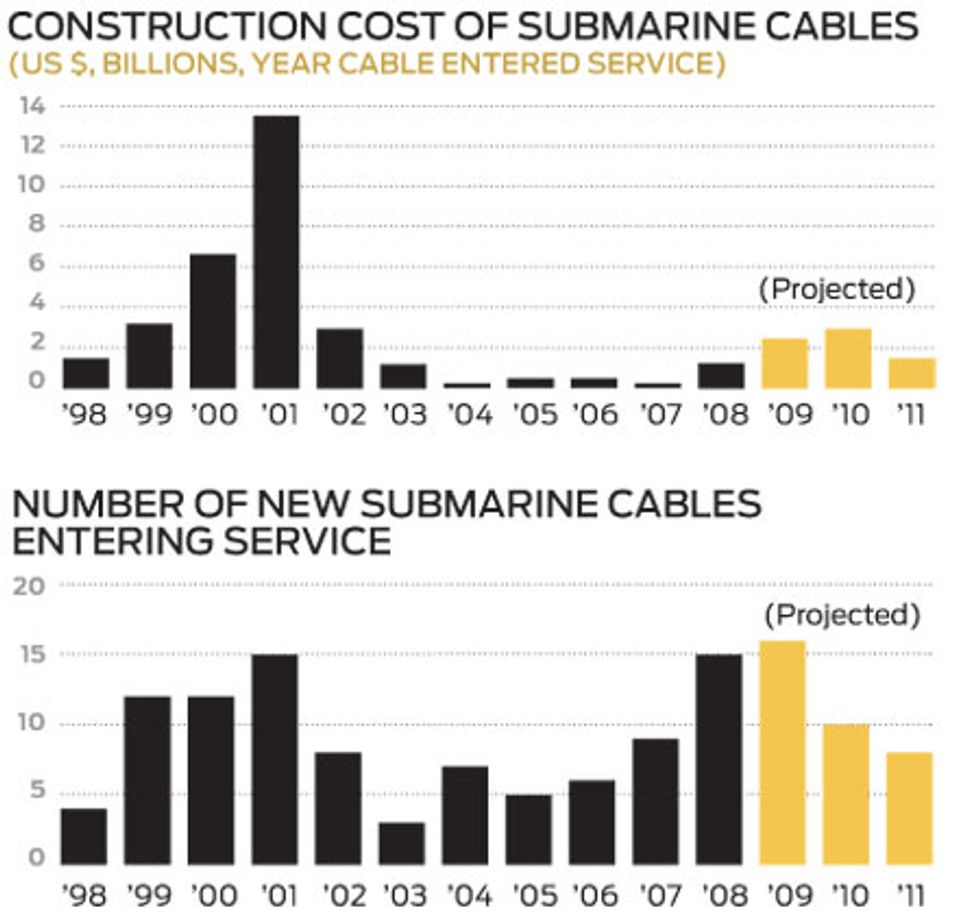SOURCES [Left]: TeleGeography Research; "History of the Atlantic Cable and Undersea Communications" by Bill Glover; Wikipedia
SOURCES [Right]: https://www.telegeography.com; https://www.atlantic-cable.com/Cables/CableTimeLine/index.htm
Undersea cable construction is booming, with 15 cables laid last year, as many as in the peak year of 2001. Even more cables will be laid this year, according to a recent report from TeleGeography Research, an analytical firm based in Washington, D.C., whose parent company is in Exeter, England.
Prior to the late 1990s, subsea cables primarily carried telegraph and voice traffic. Then the dot-com and telecommunications manias fueled unprecedented construction under the sea as well as on land. In 2001 US$13.5billion was spent. But with every boom comes a bust; only about $2 billion was spent during four lean years from 2004 to 2007.
In the dot-com boom, spending was speculative and therefore through the roof. This time around, carriers and wholesalers are adding capacity only where new demand had soaked up the earlier glut. Spending will be lower because most new cables will cover shorter, regional runs.
Even during the lean years, global demand never slaked, growing at an average compound annual rate of 54 percent in the years from 2002 to 2008. In Latin America and the Caribbean, traffic grew the most, at more than 75 percent.



